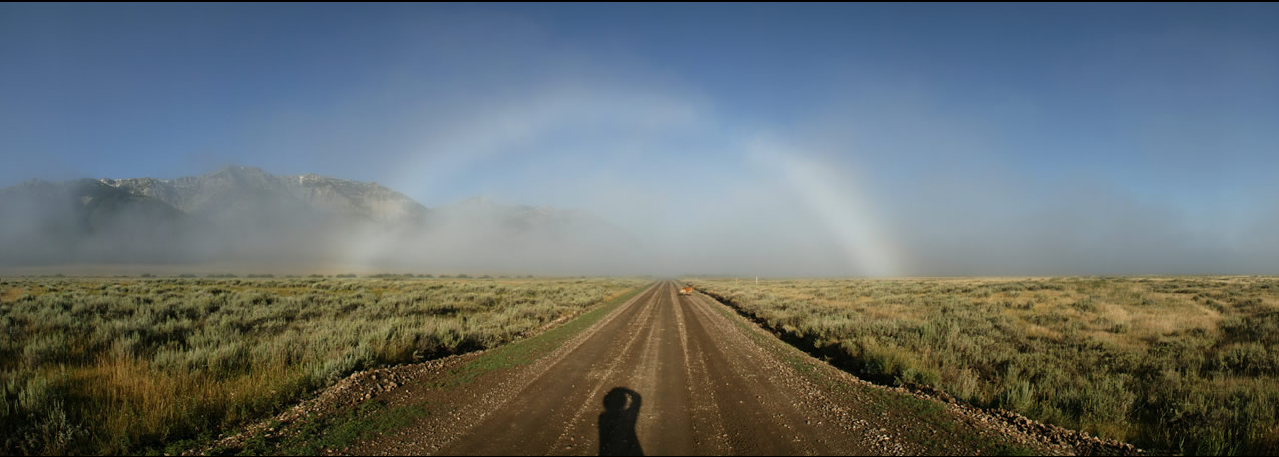Montana Fogbow
Montana Fogbow: A Spectacular Atmospheric Phenomenon
Have you ever witnessed a Montana Fogbow? This mesmerizing atmospheric phenomenon, similar to a rainbow, occurs in the remote Centennial Valley Red Rock Lakes Wildlife Refuge. It is a rare and captivating sight that leaves onlookers in awe. In this article, we will delve into the details of this fascinating natural phenomenon and explore its unique characteristics.
A Montana Fogbow is typically captured through the lens of a camera, as was the case with James Perdue's stunning photograph. The shadow cast by the photographer's head, or more precisely, that of the camera, marks the center of the bow at the antisolar point directly opposite the sun. Just inside the bow, there is a distinct dark band followed by a faint and broad supernumerary. The area inside the bow appears bright due to refracted and reflected light, much like a traditional rainbow.
One interesting aspect of the Montana Fogbow is the presence of a fragment of a very faint secondary fogbow outside the main bow, to the right. This secondary fogbow adds an extra touch of enchantment to an already magical display. While the primary fogbow steals the show with its vibrant colors and striking features, the secondary fogbow complements it with its subtle and ethereal appearance.
To better understand the Montana Fogbow, let's explore some key details:
-
Formation: Like rainbows, fogbows are formed by sunlight interacting with water droplets. However, fogbows occur when the water droplets are much smaller than raindrops, resulting in a diffused and almost colorless appearance.
-
Antisolar Point: The center of the Montana Fogbow is located at the antisolar point, which is directly opposite the sun. This means that the bow can only be seen when you have your back to the sun.
-
Dark Band: Inside the fogbow, there is a characteristic dark band. This band is caused by the interference of light waves as they pass through the water droplets, resulting in a decrease in brightness.
-
Supernumerary: Beyond the dark band, a faint and broad supernumerary can be observed. Supernumeraries are additional bands of light that appear on the inner edge of rainbows and fogbows. They are caused by the wave nature of light and the interference between different light paths.
-
Secondary Fogbow: The fragment of a very faint secondary fogbow that can be seen outside the main bow adds an extra layer of intrigue to the Montana Fogbow. This secondary fogbow is formed by a different set of water droplets and has a wider radius than the primary fogbow.
-
Photographing Fogbows: Capturing the beauty of a Montana Fogbow requires careful positioning and lighting conditions. The shadow of the camera or photographer's head acts as a guide to locate the antisolar point, ensuring the fogbow is captured at its most captivating angle.
The Montana Fogbow serves as a reminder of the incredible phenomena that occur in our atmosphere. Its unique characteristics and ethereal beauty make it a sight to behold for anyone lucky enough to witness it. Next time you find yourself in the Centennial Valley Red Rock Lakes Wildlife Refuge, keep your eyes peeled for this extraordinary display of nature's wonders.

Montana Fogbow imaged by James Perdue (Photography) in the remote Centennial Valley Red Rock Lakes Wildlife Refuge, August 5 '06. Image ©James Perdue, shown with permission.
The shadow of the photographer's head (or to be precise that of the camera) marks the bow centre at the antisolar point directly opposite the sun. Just inside the bow is a characteristic dark band and then a faint and broad supernumerary. Like a rainbow, the area inside the bow is bright with refracted and reflected light. Outside the bow to the right there is a fragment of very faint secondary fogbow.
Note: this article has been automatically converted from the old site and may not appear as intended. You can find the original article here.
Reference Atmospheric Optics
If you use any of the definitions, information, or data presented on Atmospheric Optics, please copy the link or reference below to properly credit us as the reference source. Thank you!
-
<a href="https://atoptics.co.uk/blog/montana-fogbow/">Montana Fogbow</a>
-
"Montana Fogbow". Atmospheric Optics. Accessed on November 17, 2024. https://atoptics.co.uk/blog/montana-fogbow/.
-
"Montana Fogbow". Atmospheric Optics, https://atoptics.co.uk/blog/montana-fogbow/. Accessed 17 November, 2024
-
Montana Fogbow. Atmospheric Optics. Retrieved from https://atoptics.co.uk/blog/montana-fogbow/.